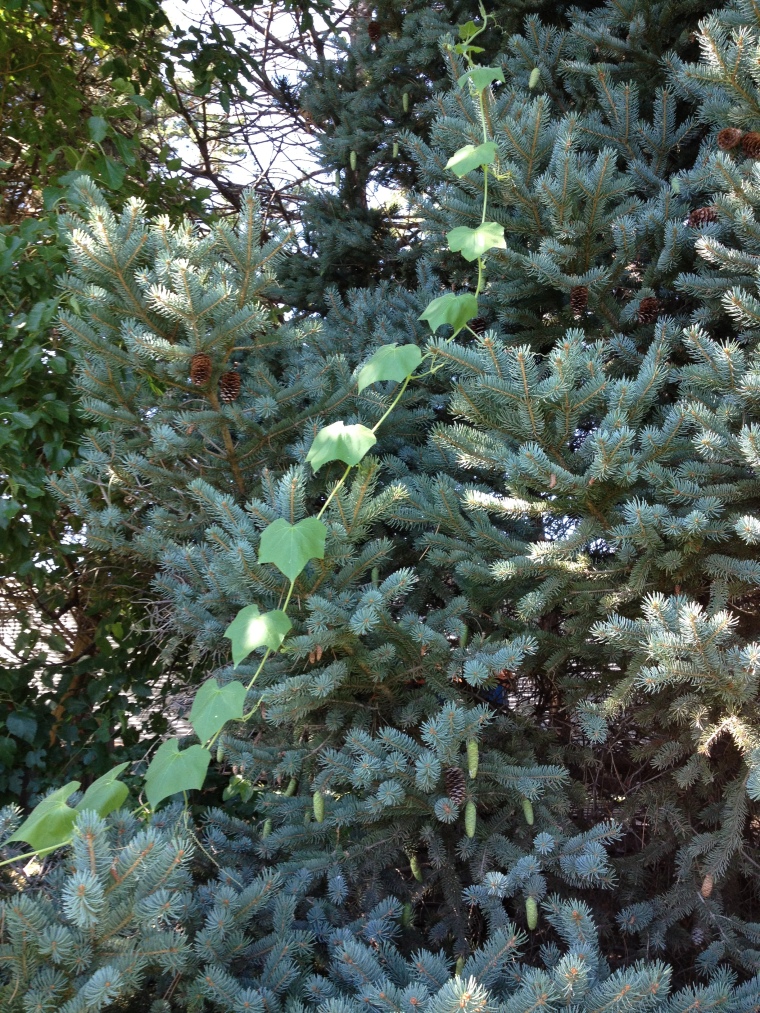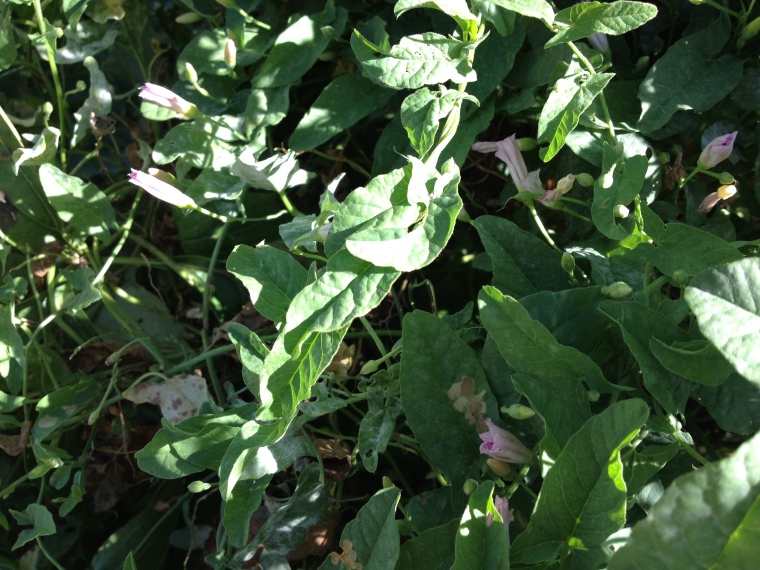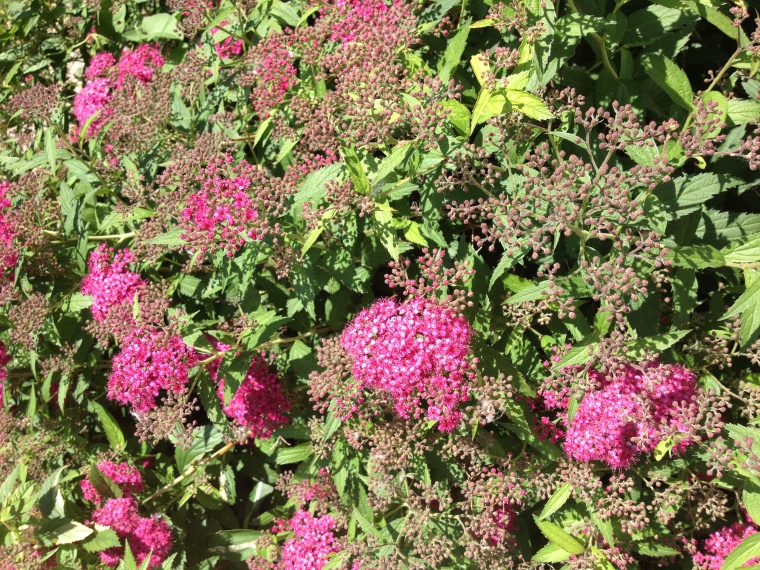It is summer. Our gardens are out in full force and finally beginning to produce edible products. One of the biggest problems in gardens, are the weeds. There are many different types of weeds that come into our gardens, and control of these pests is very difficult.

Wild cucumber and burcucumber are two very similar vining weeds that can be found in your vegetable garden, flower garden, and growing up the sides of trees in a windbreak. These vines looks a lot like a cucumber vine that we intentionally grow in our gardens. The wild cucumber has deeper lobes than burcucumber but both will vine up and hold onto plants and other objects, such as tomato cages, with tendrils.

Bindweed is another common problem anywhere in the landscape. This weed has arrowhead shaped leaves and a small, petunia-shaped, white or pink flower. This weed vines and holds onto plants with the stems of the vine rather than using tendrils. Bindweed is an invasive weed that can climb up on your plants and cause decreased growth and other issues as the bindweed covers the leaves and plants.
Good control for either of these vining weeds would include many different broadleaf herbicides. If applied early in the spring or late in the fall, 2,4-D can be used for both of these weeds. 2,4-D should not be applied when the temperatures for 72 hours are predicted to be above 80 degrees Fahrenheit. Products that contain the active ingredient of Triclopyr will also work for these weeds and can be used if the temperatures for 24 hours is predicted to be below 80 degrees Fahrenheit. If the weeds are growing in and among other desired plants, the best option would be a stump treatment after cutting the weed back or painting it on the leaves of the weed being careful to not get the herbicide on the desired plants.
In a vegetable garden, most herbicides are not advised for use due to the movement of the pesticide. Broadleaf herbicides would work for these vining weeds, however, they would also cause damage and possibly death of the crops growing in your garden because most of our vegetable garden plants are broadleaf plants as well. These herbicides can spread to our desired vegetable plants through direct spray, wind movement, through the soil, and by turning into a gas and moving toward the desired plants.
The best control for many weeds in our vegetable gardens would be mulch and hand pulling. Good mulch choices include straw, hay, wood chip mulch, or grass clippings. Be cautious when using grass clippings on your garden. Many herbicide labels now have more conservative recommendations that state that grass clippings from lawns to which a herbicide has been applied should never be used as mulch. If this is stated on the herbicide label, that must be followed. If the label does not state this, it is recommended to wait 3-5 mowings from application of herbicides to use of the mulch. The safest option is to avoid using grass clippings on your gardens if the lawn has been treated with herbicides that growing season. If you are unsure of where the clippings came from or when or if they have been treated this season, avoid use of these clippings as mulch to avoid any contamination from the herbicides.

